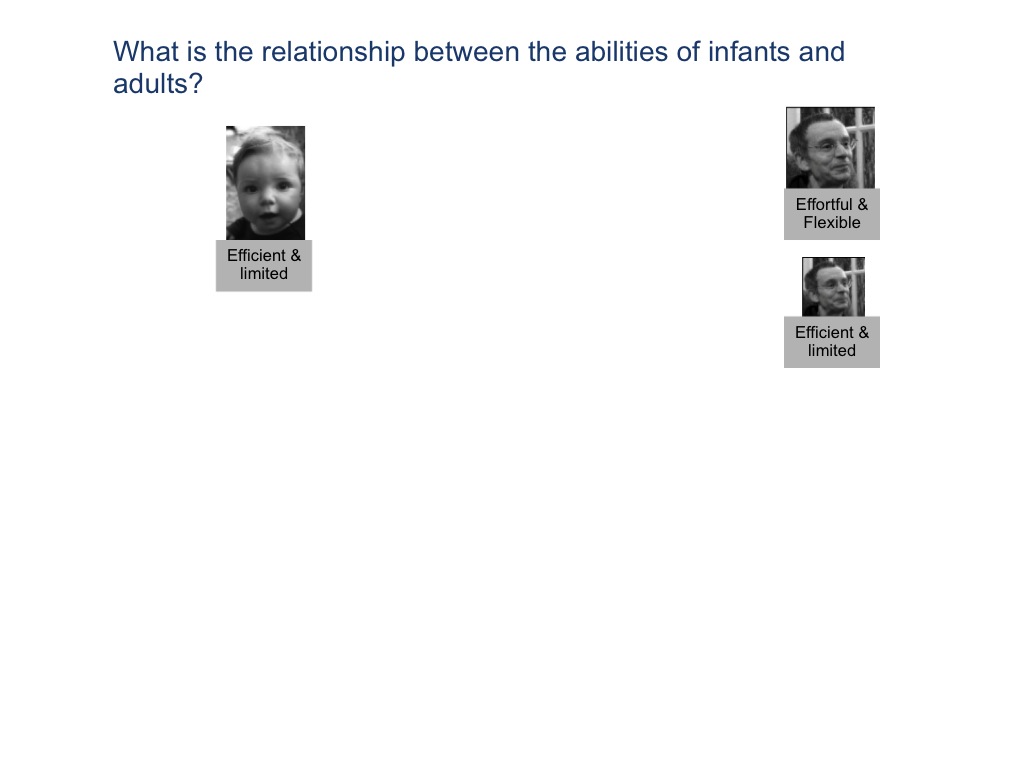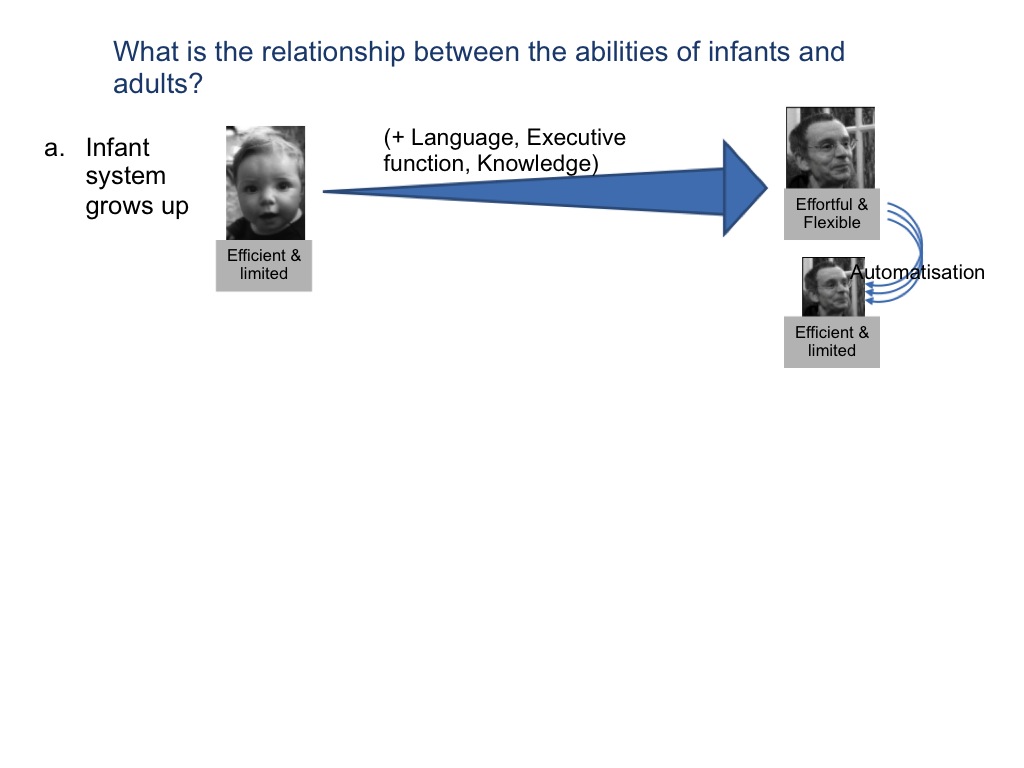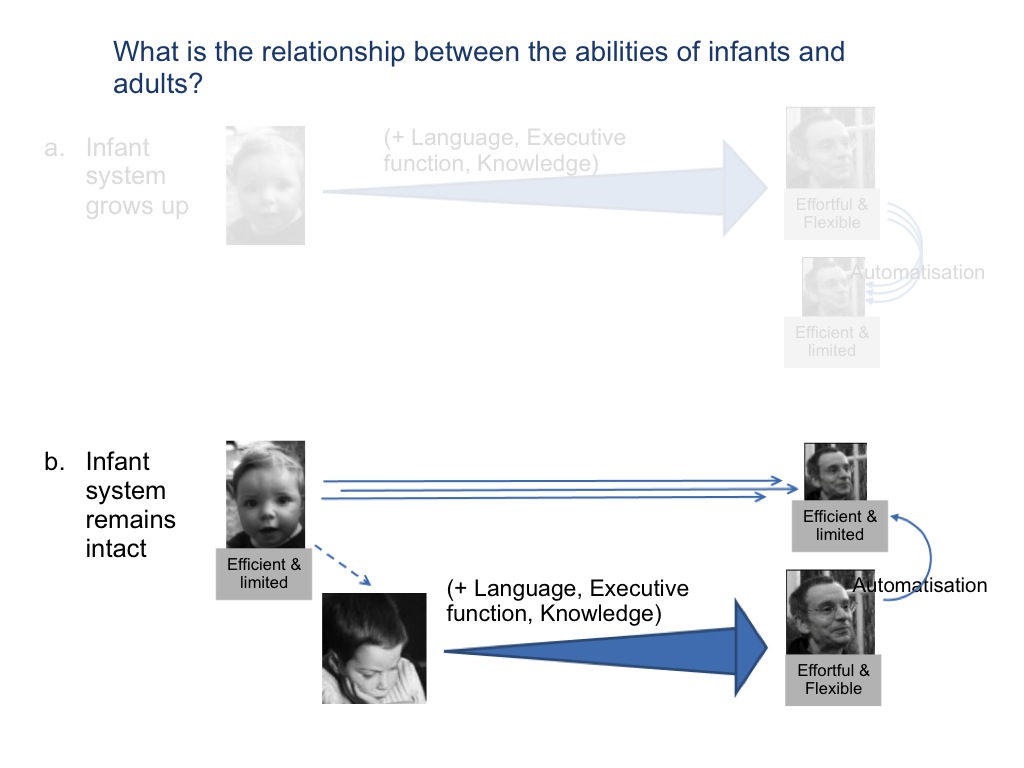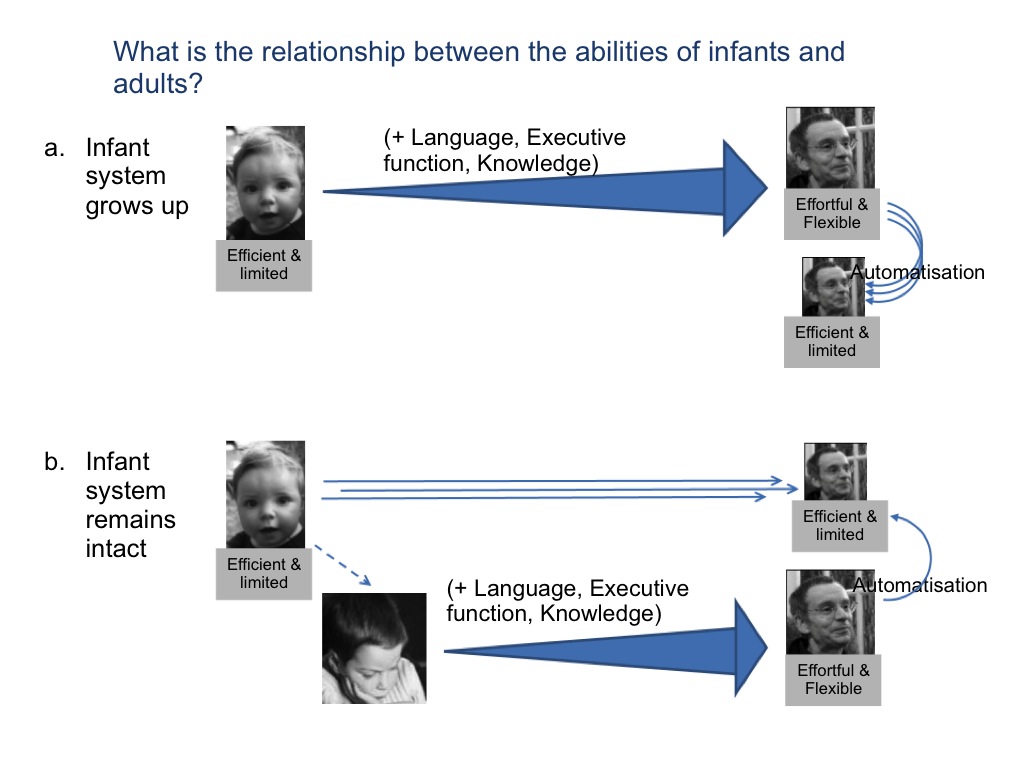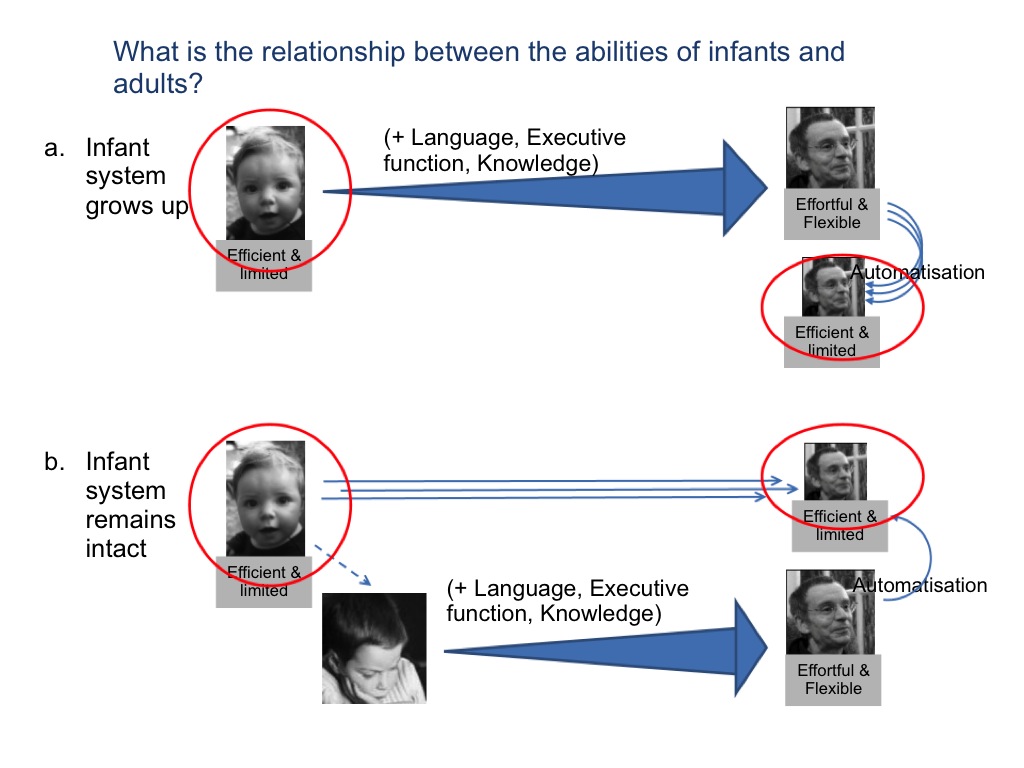Press the right key for the next slide (or swipe left)
also ...
Press the left key to go backwards (or swipe right)
Press n to toggle whether notes are shown (no equivalent if you don't have a keyboard)
Press m or double tap to see a menu of slides
Mindreading: Second Puzzle
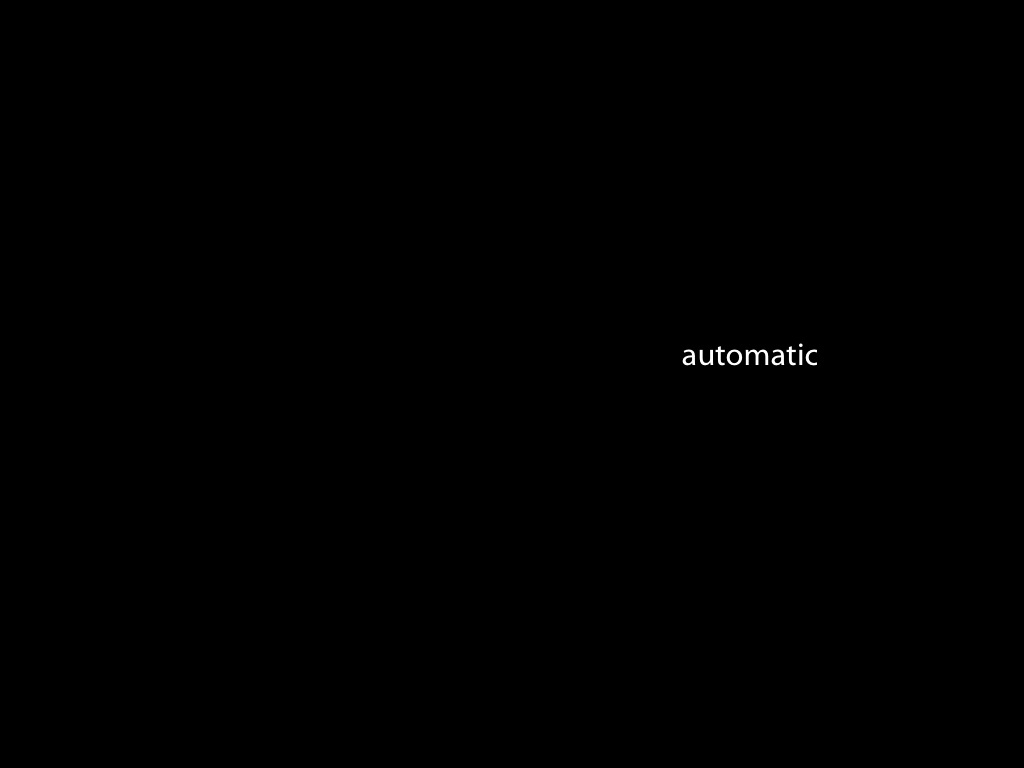
Are human adults’ abilities to represent beliefs automatic?
There is evidence for \citep{kovacs_social_2010,Schneider:2011fk} and against \citep{apperly:2008_back,apperly_why_2010}.
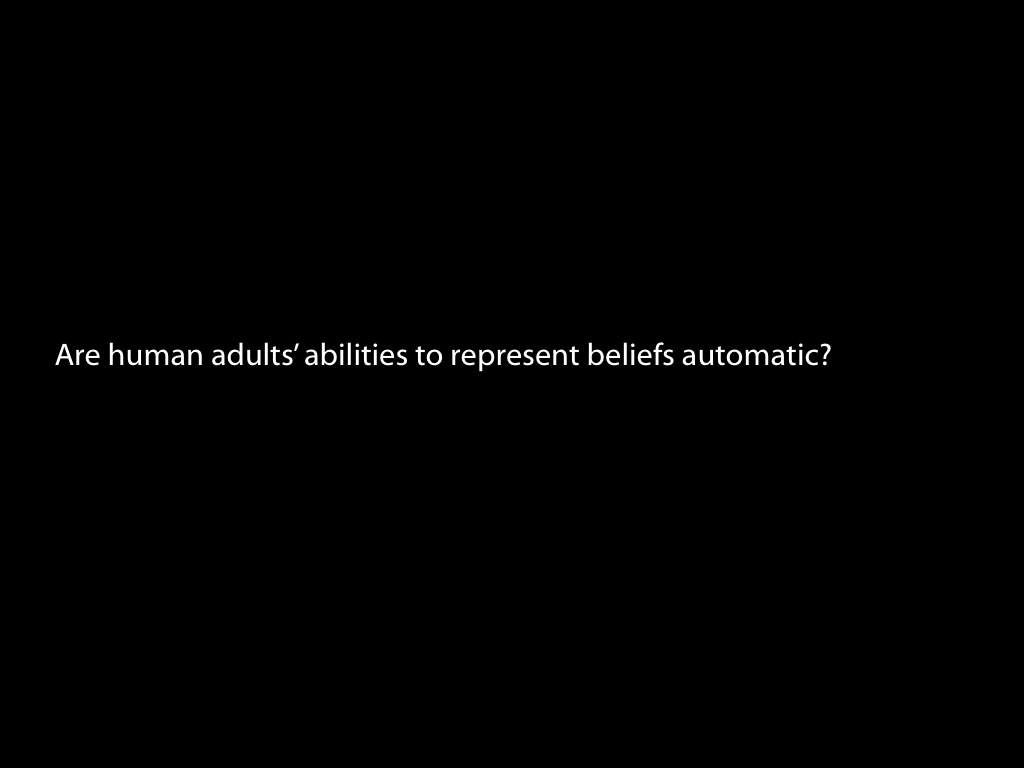
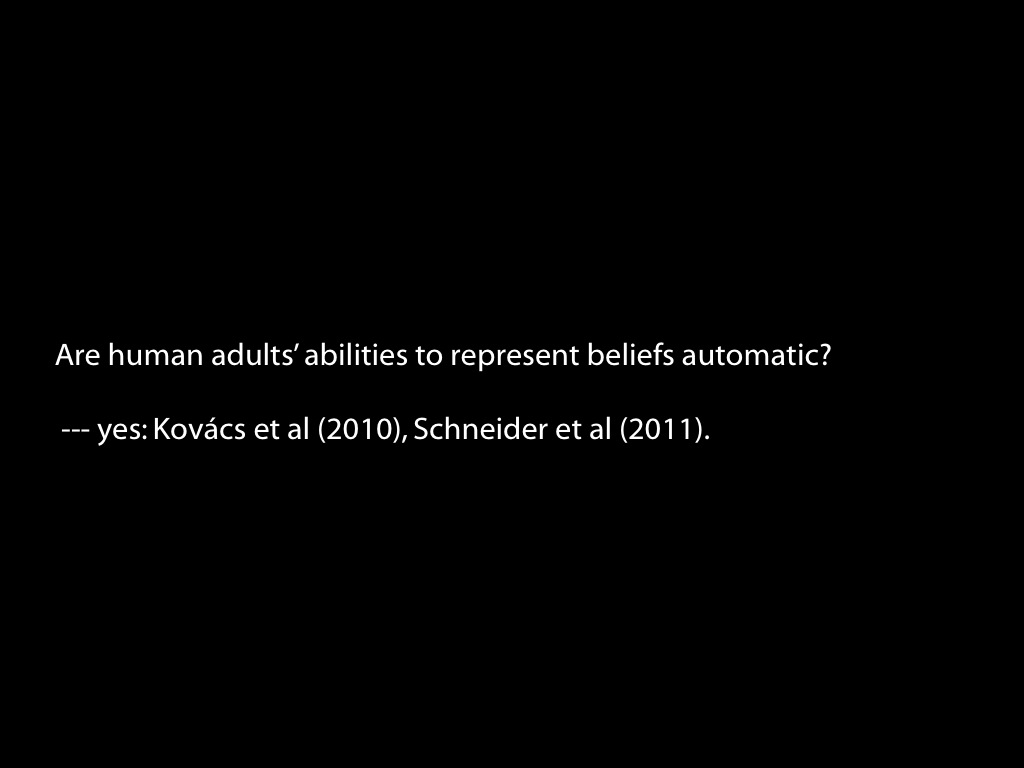
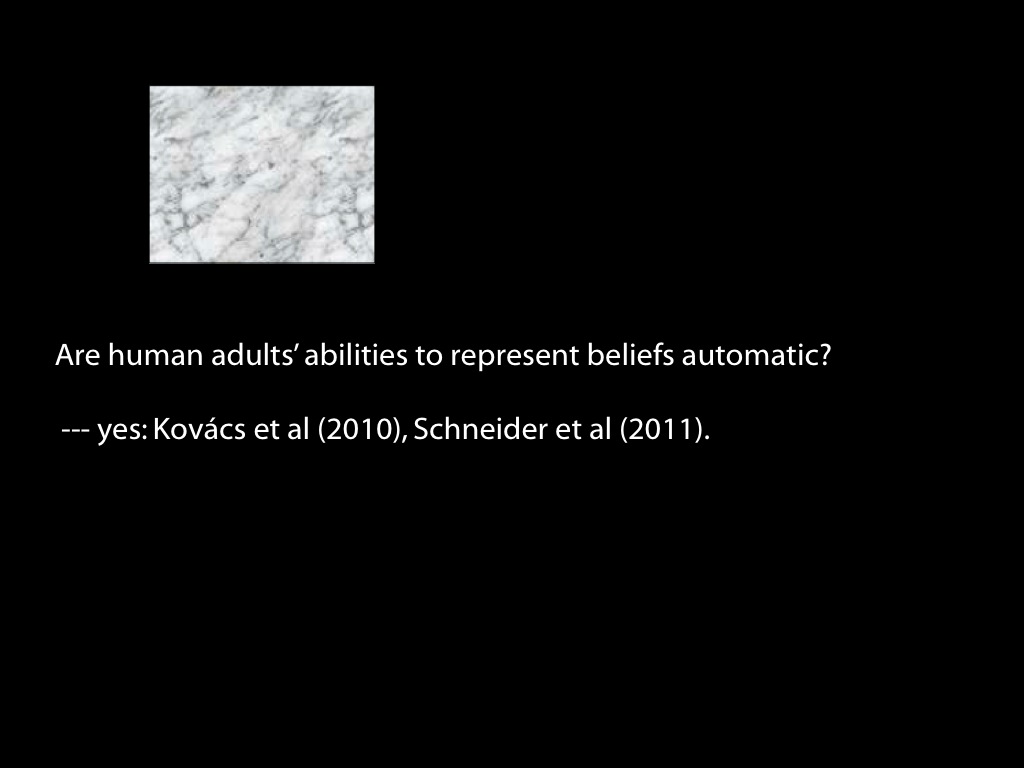
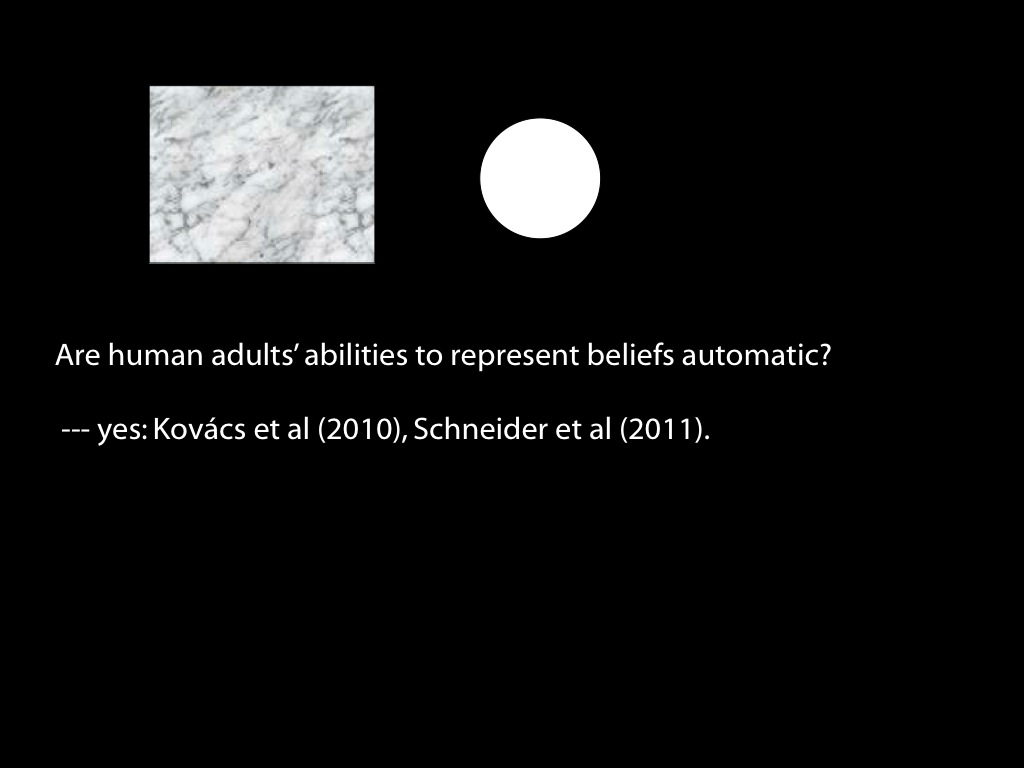
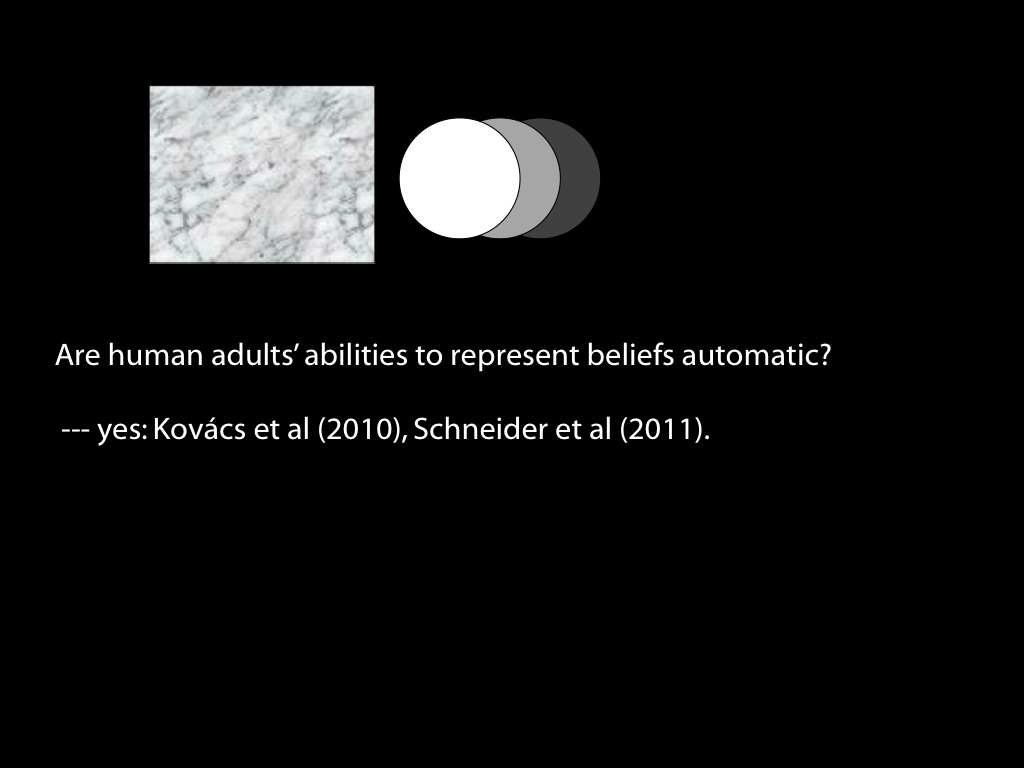
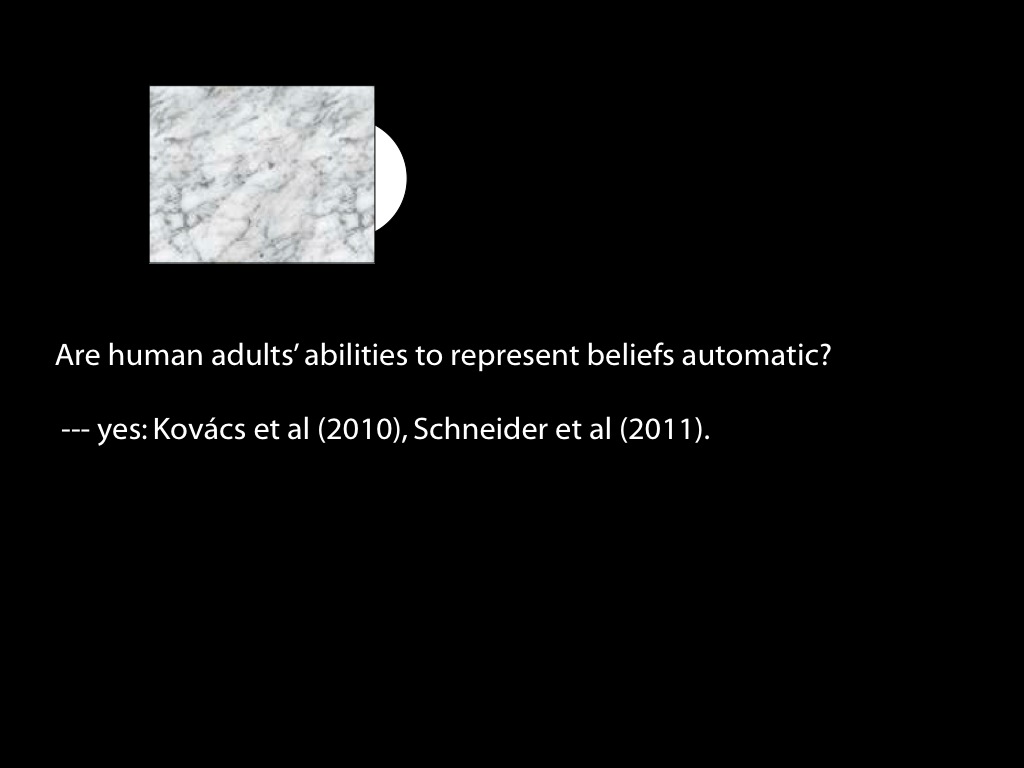
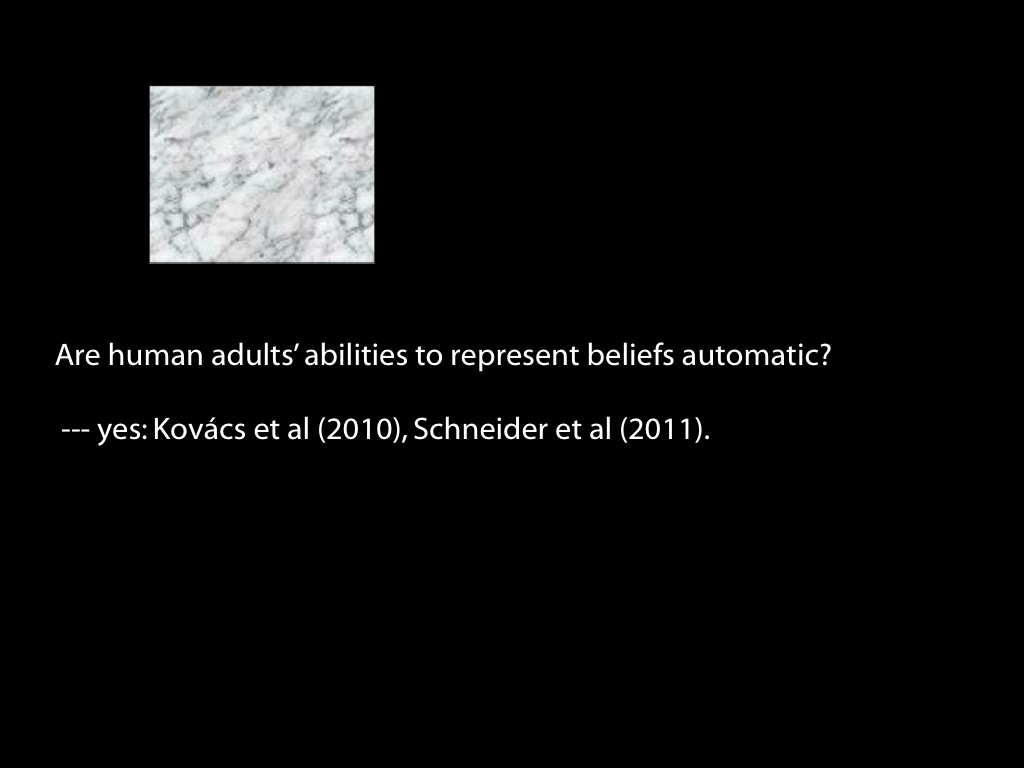
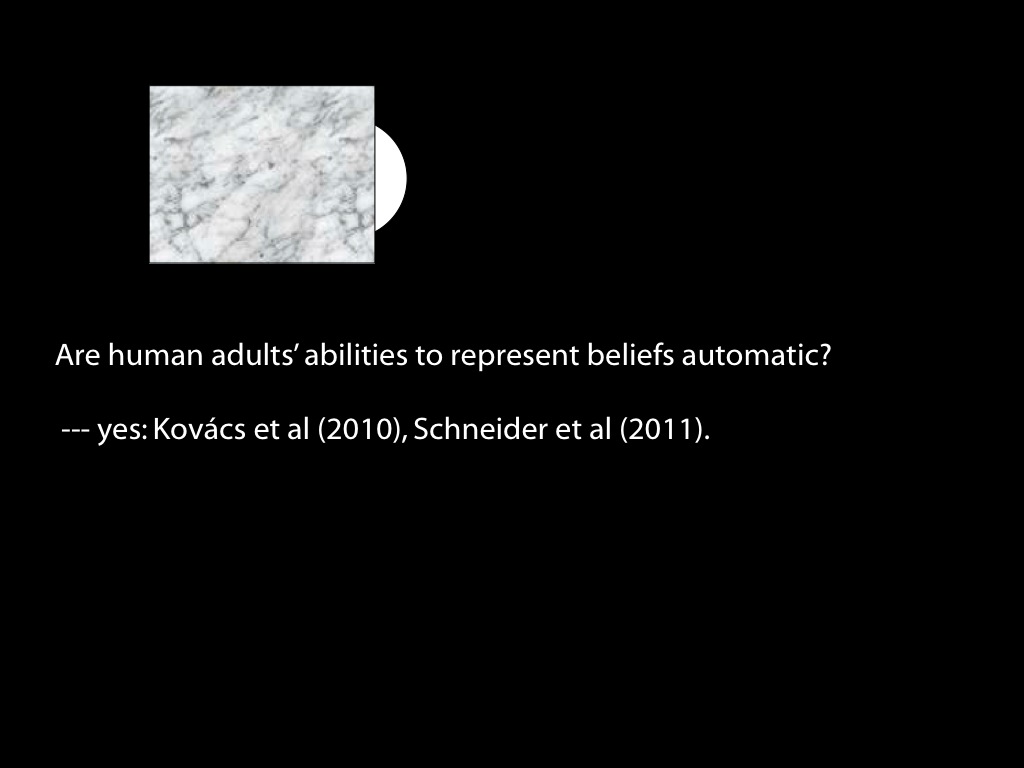
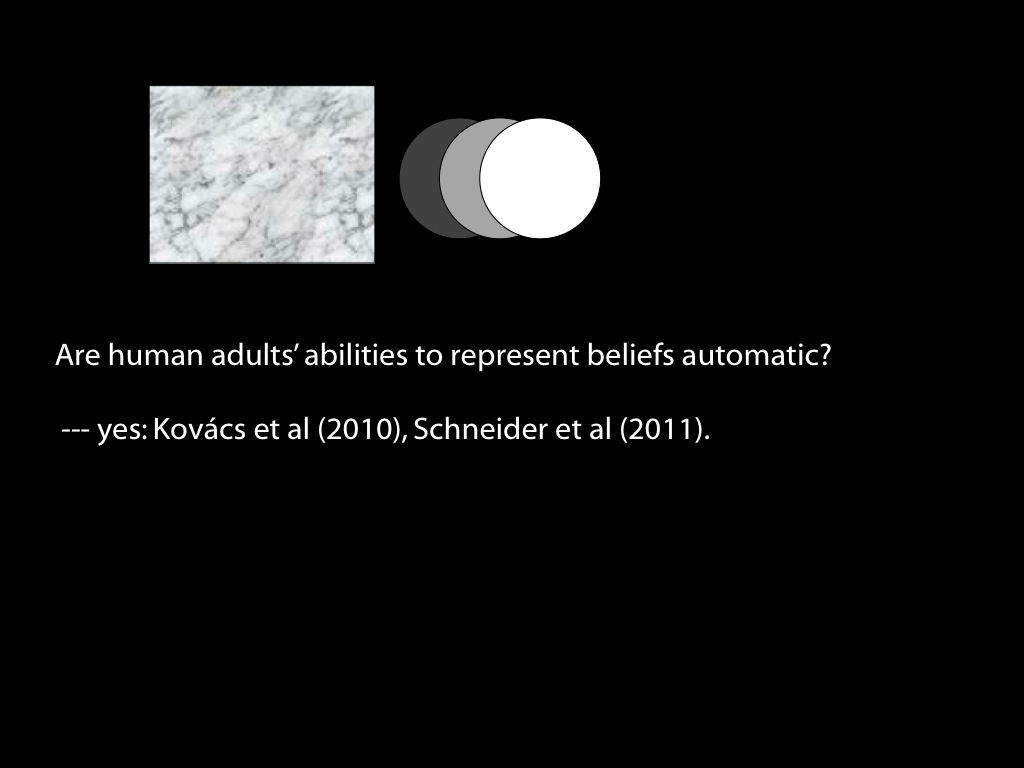
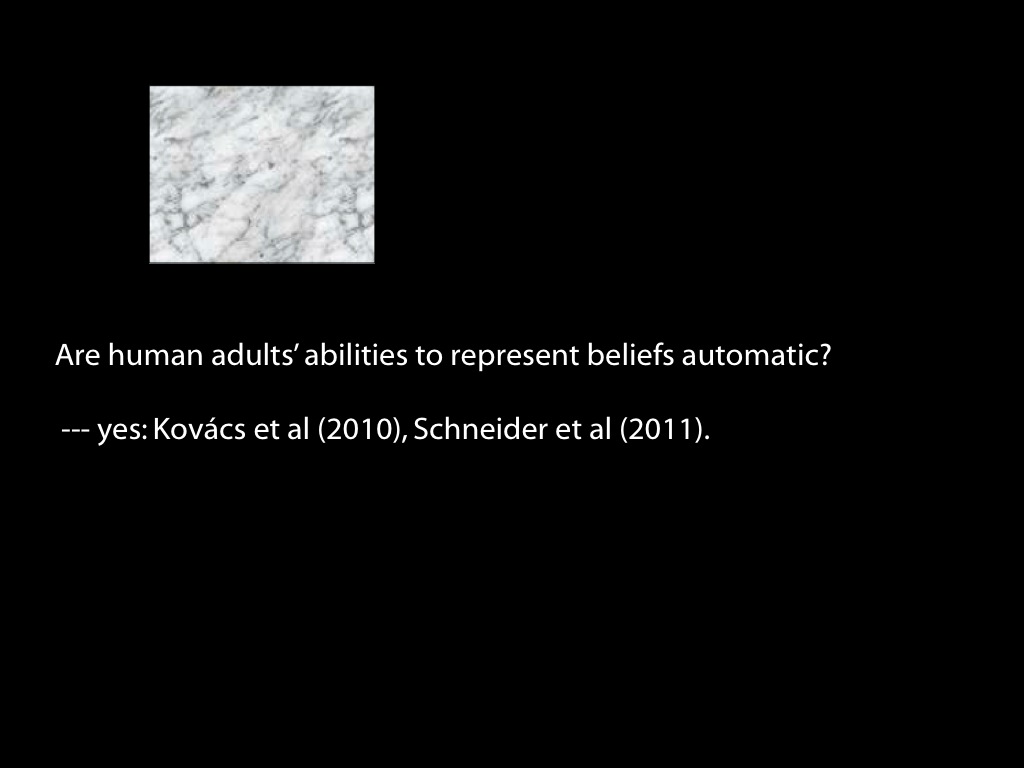
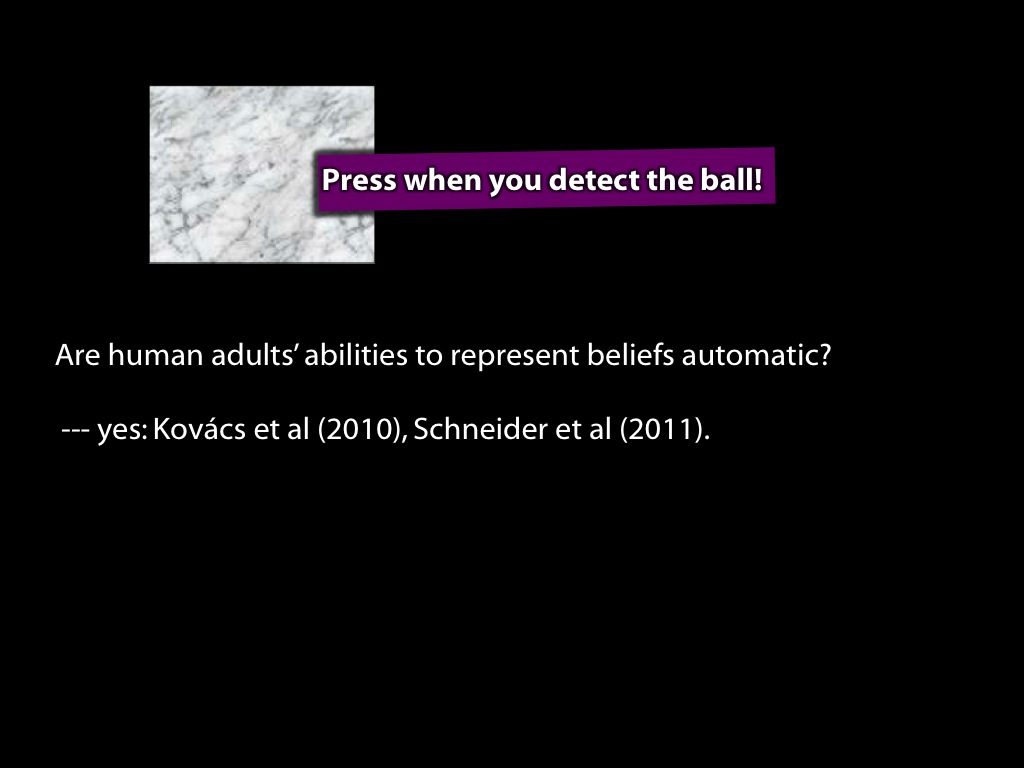
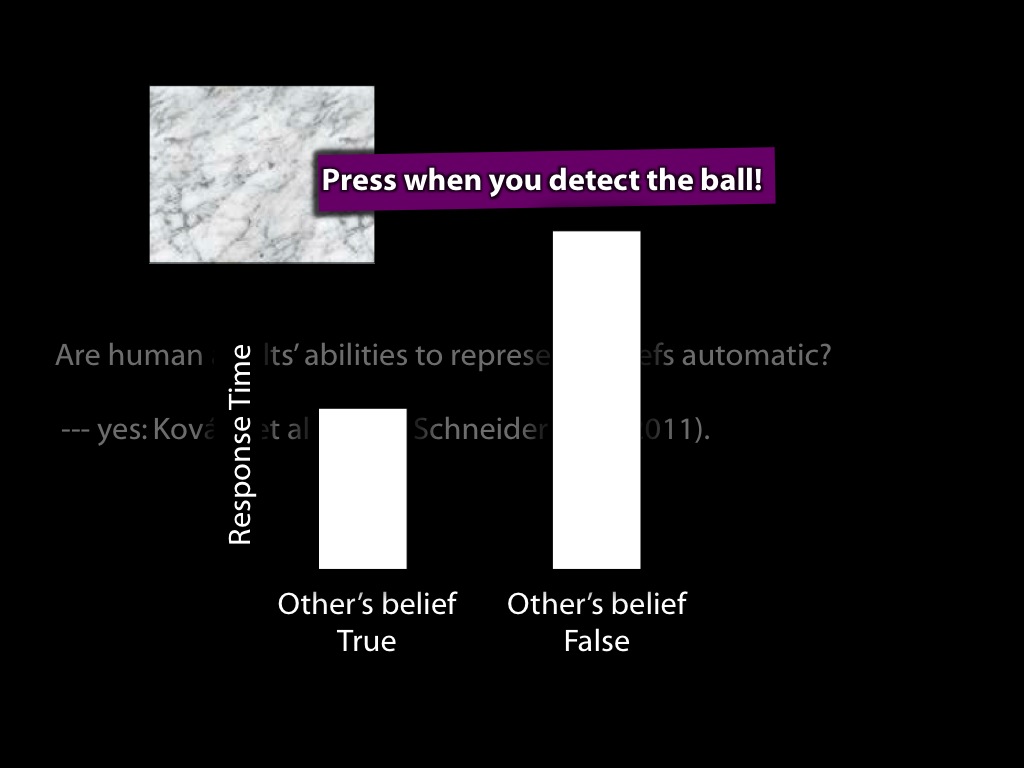
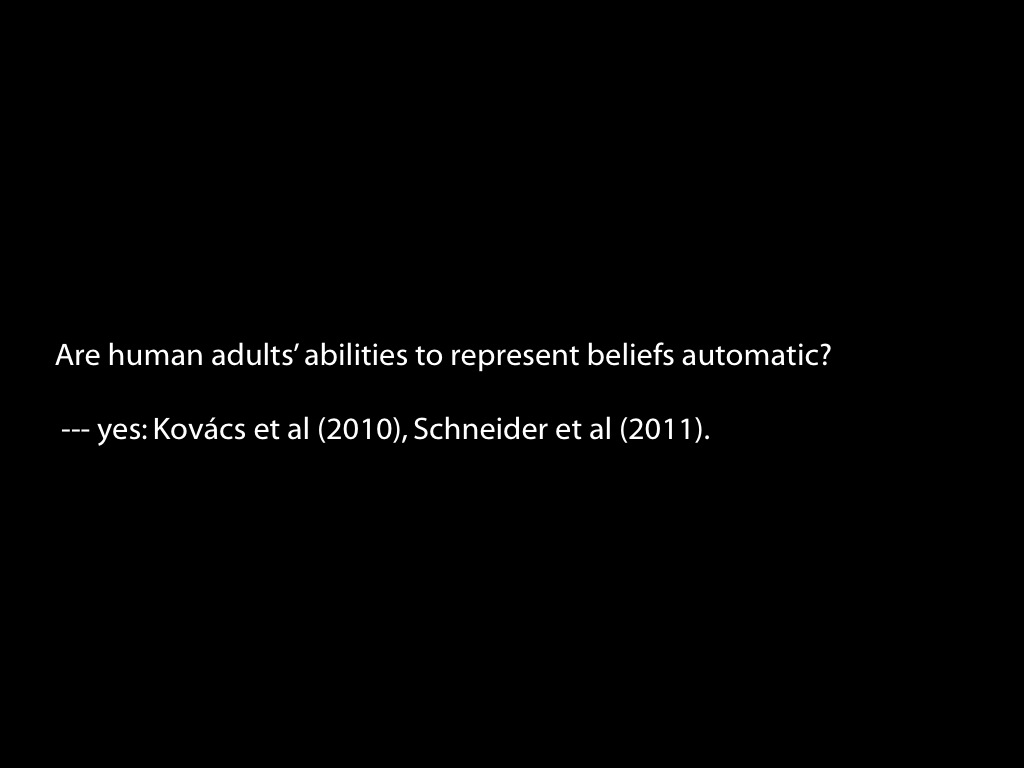
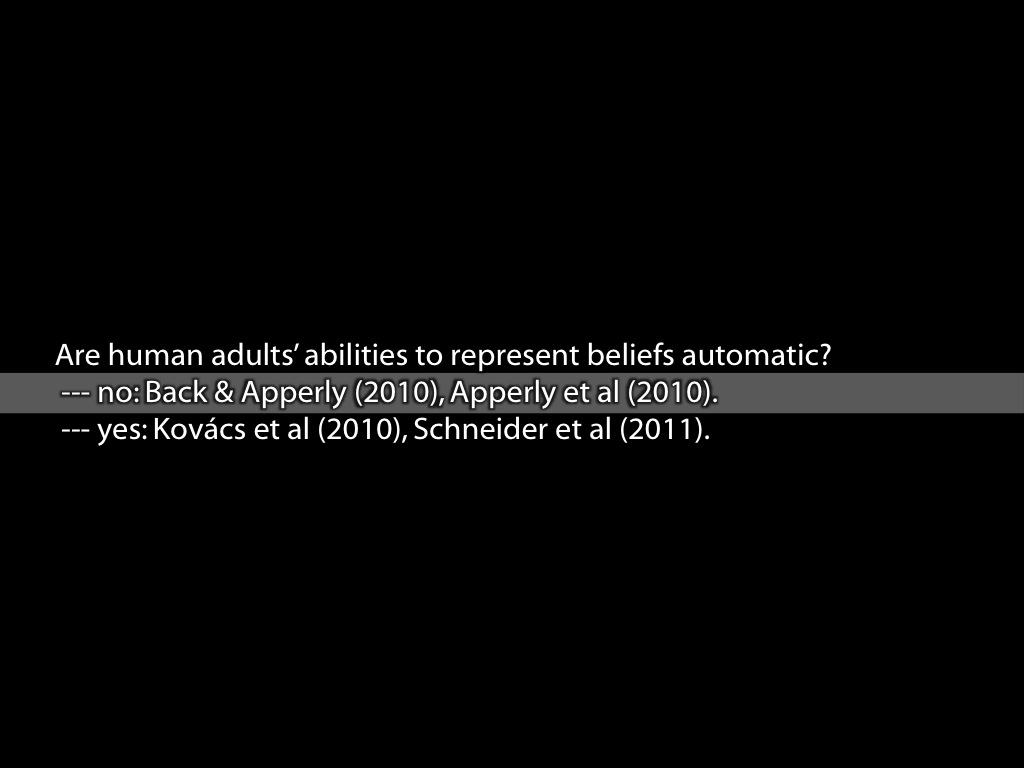
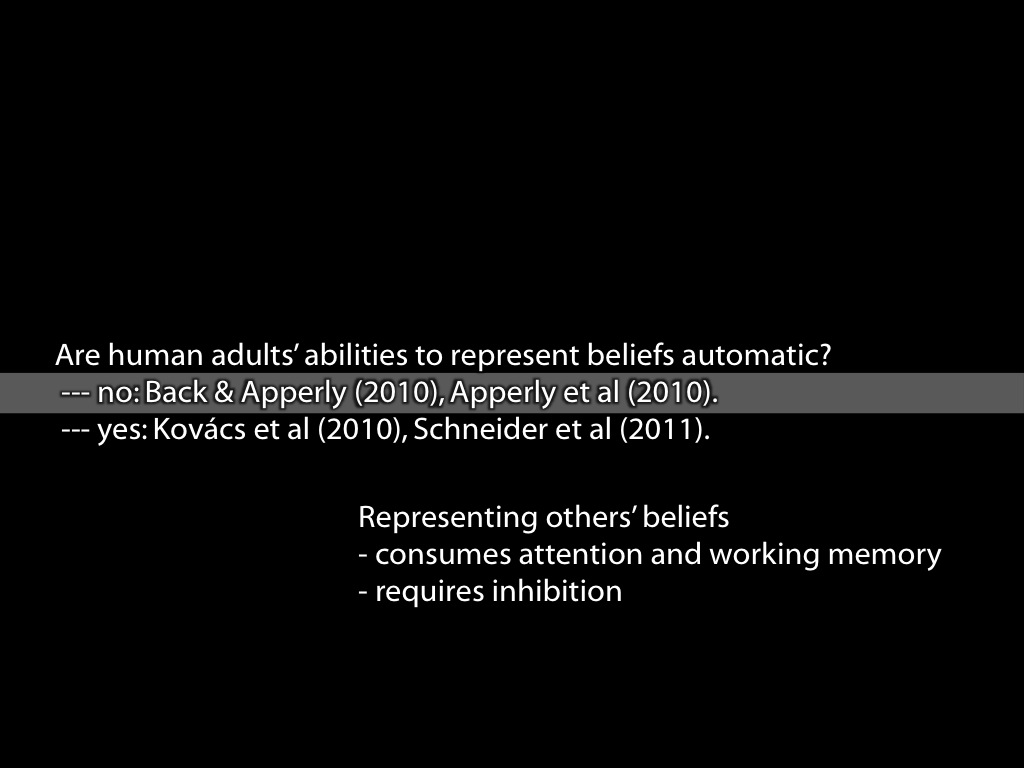
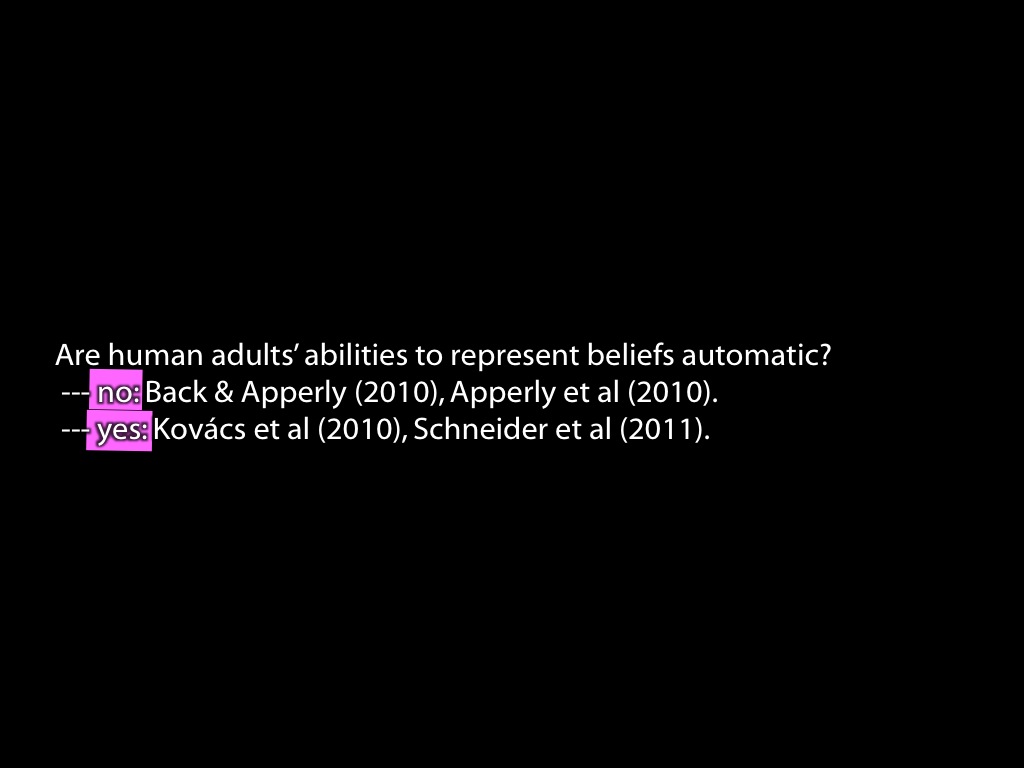
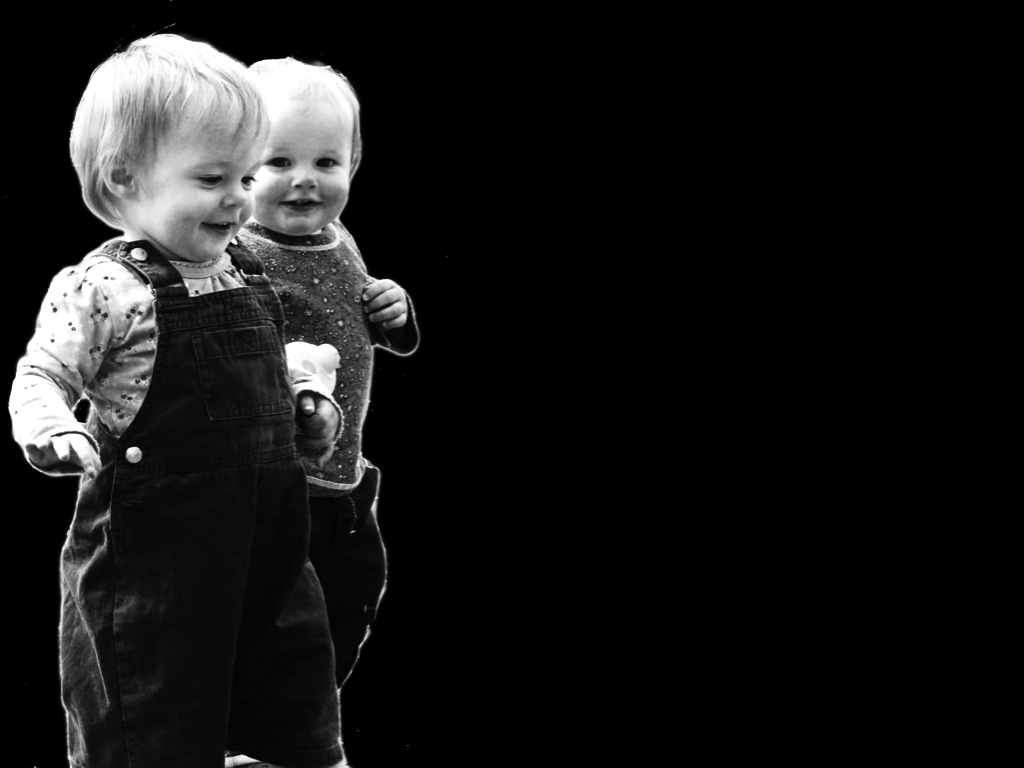
challenge
Explain the emergence, in evolution or development, of mindreading.
So how does this second puzzle bear on our overall objective?
The challenge is to explain the emergence, in evolution or development, of mindreading.
The fact that mindreading is sometimes automatic and sometimes not is good evidence that mindreading is not a single thing.
Rather there are multiple kinds of process or system involved in mindreading.
From this we can conclude two things.
First, in this respect, the cases of mindreading is much like the cases of colour and physical objects.
These also involved multiple systems; this took the form of a distinction between core knowledge and knowledge proper.
Second, we have further grounds for thinking that some forms of mindreading are modular.
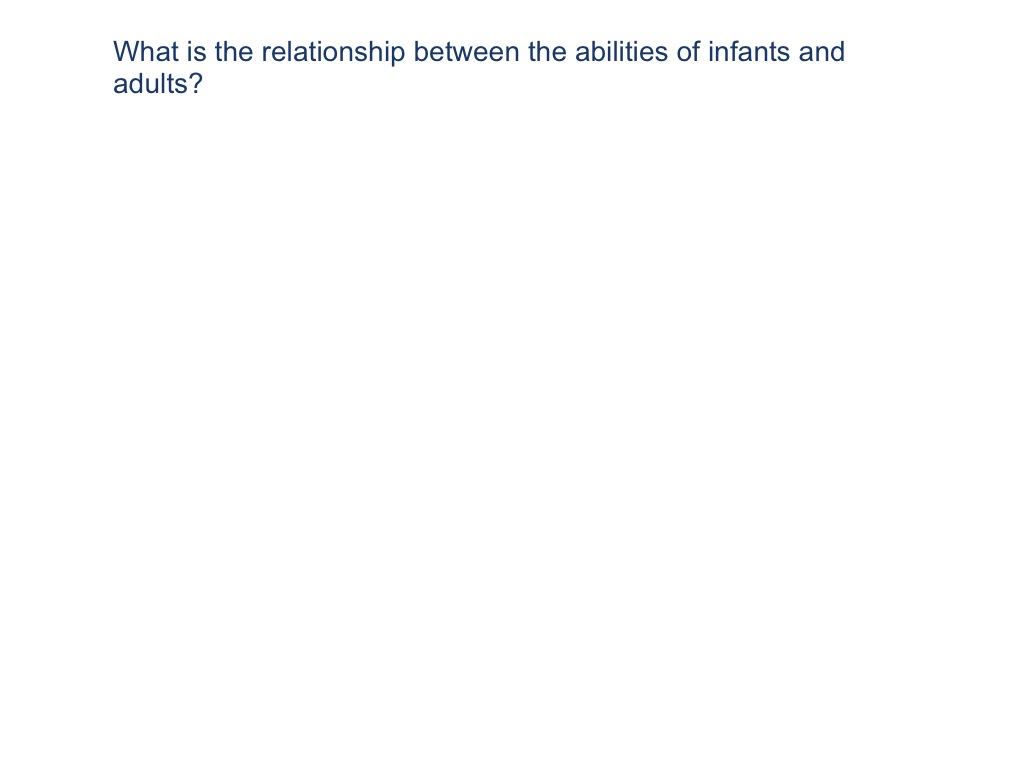
[These slides are from a joint presentation with Ian Apperly (BCCCD)]
What is the relation between infant and adult capacities for mindreading?
It's important at this point to recognise that there are two quite different possibilties.
